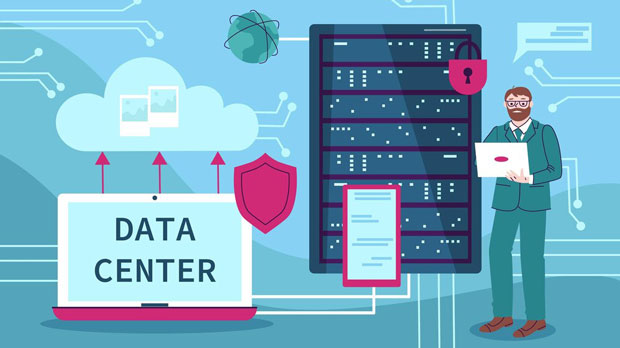The rapid development of the digital economy has led to an increased reliance on data centers, especially dedicated data centers, to support the storage and processing of critical data. However, these centers also face numerous security risks, which could lead to data breaches, financial losses, or reputational damage. For businesses engaging in dedicated data center management, understanding the potential risks and establishing robust mitigation strategies is essential. This article explores key security risks for dedicated data center proxies and offers practical guidelines for minimizing those risks, ensuring both operational efficiency and data protection. Understanding the Security Risks of Dedicated Data CentersDedicated data centers are specialized facilities designed to offer clients exclusive use of physical infrastructure, such as servers, storage devices, and networking hardware. However, these centers are susceptible to a wide range of security threats. The complexity and sensitivity of managing critical systems and data in such environments introduce several potential vulnerabilities. 1. Physical Security Risks: Dedicated data centers are prime targets for physical attacks due to the valuable data they store. Unauthorized physical access can result in theft, data tampering, or equipment damage. Criminals may attempt to break in through various means, targeting weak access controls, insufficient surveillance, or untrained personnel. Mitigation Strategy: To address these physical security risks, comprehensive access control systems must be in place. These systems should include biometric authentication, keycard access, and robust CCTV monitoring. Regular security audits and employee training programs can further enhance physical security measures.2. Network Security Threats: Network security is one of the most critical aspects of protecting a dedicated data center. Cyberattacks such as Distributed Denial of Service (DDoS) attacks, malware intrusions, and data breaches can disrupt services, steal sensitive data, or damage critical infrastructure. Mitigation Strategy: To mitigate network risks, robust firewalls, intrusion detection/prevention systems (IDS/IPS), and advanced encryption techniques should be implemented. Regular patch management and vulnerability assessments should be conducted to address emerging threats. A layered security approach, including network segmentation and traffic monitoring, will also enhance overall protection.3. Data Breaches and Insider Threats: Data breaches represent one of the most serious threats to dedicated data centers. Hackers may exploit weaknesses in the system to gain unauthorized access to sensitive information. Moreover, insiders with privileged access may misuse their position to leak or tamper with data, leading to a loss of trust and financial damage. Mitigation Strategy: Implementing a strict access control policy is essential in managing data access. Data should be encrypted both in transit and at rest to reduce the impact of a breach. Furthermore, regular employee background checks, clear role-based access controls, and ongoing monitoring of user activities can help detect and prevent insider threats.4. Compliance and Legal Risks: Dedicated data centers often handle highly regulated data, such as financial records or healthcare information. Failure to comply with industry standards or data protection laws (e.g., GDPR, HIPAA) can lead to legal consequences, including heavy fines and reputational harm. Mitigation Strategy: Data center proxies must stay up-to-date with regulatory requirements and integrate compliance into their operational processes. Regular audits, legal consultations, and employee training in compliance matters are crucial steps in preventing legal risks.Best Practices for Securing Dedicated Data CentersEnsuring the security of dedicated data centers requires adopting industry best practices and leveraging modern technologies to safeguard critical assets.1. Adopt Zero-Trust Security Model: The Zero-Trust security model assumes that every user, device, and application within the network may be a potential threat, and therefore, access should only be granted based on strict verification. Implementing Zero-Trust involves continuous monitoring and the use of multi-factor authentication (MFA) to enforce access controls.2. Regular Data Backups and Disaster Recovery: In the event of a cyberattack, system failure, or natural disaster, data recovery and backup systems become critical. Regular backups of all critical data should be stored in a secure location, preferably offsite or on a cloud platform, to ensure that data can be restored quickly in case of an incident. Mitigation Strategy: Establish a well-documented disaster recovery plan (DRP) that includes guidelines for data restoration and downtime management. Test recovery procedures regularly to ensure they can be executed efficiently when needed.3. Employee Training and Awareness: Since human error is one of the most significant factors in data security breaches, continuous employee training is a vital mitigation strategy. Employees should be educated about common threats such as phishing attacks, social engineering tactics, and proper data handling procedures. Mitigation Strategy: Conduct regular training sessions and simulate real-world attacks (e.g., phishing drills) to ensure that staff are well-prepared to identify and respond to potential security risks. Promote a security-conscious culture that encourages employees to report suspicious activity promptly.4. Third-Party Vendor Risk Management: Many dedicated data centers rely on third-party vendors for services such as hardware procurement, cloud hosting, or network support. These vendors often have access to sensitive data and systems, which poses a potential security risk. Mitigation Strategy: Perform rigorous due diligence when selecting third-party vendors. Ensure that these vendors comply with the same security standards and regulations as the data center itself. Establish clear contracts outlining the vendor's responsibilities and implement regular audits to assess vendor security performance.Conclusion: Securing the Future of Dedicated Data CentersAs data continues to play a crucial role in business operations, the security of dedicated data centers is more important than ever. The risks involved are varied, ranging from physical security threats to complex cyberattacks, and require proactive mitigation strategies to prevent significant losses. By adopting a layered security approach, implementing industry best practices, and continuously monitoring systems, data center proxies can ensure that their clients' data remains safe, secure, and compliant with relevant regulations.In summary, managing security risks in dedicated data centers requires an ongoing commitment to technological advancements, employee training, and strong compliance protocols. With the right strategies in place, businesses can safeguard their data infrastructure and reduce the likelihood of costly security incidents, thereby enabling long-term success and trust in the services they provide.
Nov 11, 2025



































































